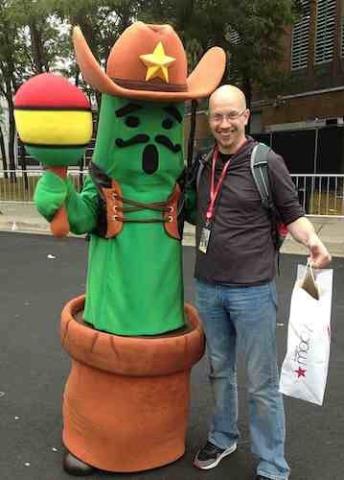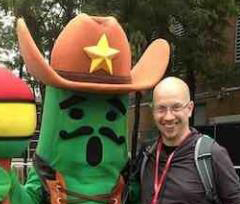Today, we meet concept artist Fran Johnston, who will be tutoring our April course: Background for 2D Animation.

Hi Fran! Can you tell us a bit about yourself and how you got into animation? Was Background the area that initially appealed to you or did you have other ambitions?
Well I got into animation because when, it was time to apply for colleges after school, it was the closest thing to comic books. I had wanted to draw comics from a young age but when I got into the animation course in Ballyfermot I realised I really just wanted to draw. I even worked in graphic design for a bit after college and that just enforced to me more that I needed to be drawing. That’s when I sought to make a career in animation. Luckily my friend was working for an animation company and was leaving. I asked him to put my name and portfolio forward as his replacement and they hired me. That was 14 years ago!
What is the role of the 2D Background/Layout Artist in a studio? How do you collaborate with other departments?
The role of a background artist is to create environments that help tell the story and act as a stage for the animation to perform in on a show. It is important that they keep the style and continuity of a show and act as a team member.
They need to keep in mind how the animation will interact with the scene so there can be some back and forth with the animation department. Also they need to make sure their background files are set up properly for the compositing department.
Can you tell us about the main similarities and differences between designing Backgrounds for TV and for feature films?
It’s easier to start with differences as that’s an obvious one. Time and money are the major differences to these types of productions. Film budgets are higher so background artists get more time to invest in their work and add little details etc. With TV animation, show deadlines can be very tight and we don’t have as much time to spend on creating masterpieces. In saying that the similarities are that we still have the same objectives and ,mostly, use the same techniques.
What are your favourite tools to work with? Can you describe your ideal workspace set-up?
I mostly work with Photoshop on a Wacom cintiq. Most studios I’ve seen though have background artists work with a regular drawing tablet. A cintiq is in no way essential to creating backgrounds. It’s just a different and, arguably, a more natural way of drawing digitally. I also have an Ipad pro for personal work. I use Procreate on that which is an amazing app for the price you pay for it. Photoshop should be coming out on the Ipad this year so I’m looking forward to finding out what that’s like. I’m seeing more and more professional artists use the ipad pro for their daily work and my dream workspace would be having my feet up by a pool in a sunny location while working on a mobile device like that 😀
You probably see a great number of portfolios through your work; if there was one thing you would like to see more of, what would it be? And what about one thing you don’t want to see anymore!?
I’d like to see more tailored portfolios. A lot of portfolios I see have a bit of everything in them. While it’s fine to show what else you can do in a portfolio it should be predominantly made up of pieces that are related to the position you’re applying for. I’ve had multiple people apply for background positions in the past and send me links to portfolios which have little or no backgrounds in them. One thing I don’t want to see anymore are portfolio pieces that don’t show knowledge of background basics such as perspective and composition. These are the essentials and while I’d be willing to take on someone I can see is not quite there yet but trying, sometimes I see pieces where there’s been no thought put in at all.
What was your favourite learning/upskilling experience in the recent years?
My favourite upskilling experience in recent years was to do a workshop with Armand Serrano at the Idea Academy in Rome. At the time he was head of Visual development at Disney. He was such a nice man and very forthcoming with critiques and tricks of the trade. Also it was in Rome so I got to stuff my face with delicious Italian food for 3 days! You can see Armand’s work here.
Finally, is there an upcoming background artist you would like us to discover?
I don’t have a single one in mind but I think, like most people, I was blown away by Spiderman : Into the Spiderverse. Any of the environment artists on that are amazing. If I had to choose one it would be Robh Ruppel. He’s been around for a good while now so he’s hardly upcoming but I think the movie has opened more people’s eyes to his amazing work. He has an Artstation page here.
Also here‘s a great article with lots of examples of artwork from Into the Spiderverse.

You can see some of Fran’s work here:
If you would like to attend Fran’s course, please click here:
Background for 2D Animation
and register before Friday 22nd march at 5pm.

